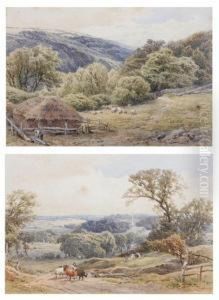Frederick George Reynolds Paintings
Frederick George Reynolds was a British artist known for his contributions to the visual arts in the early 20th century. Born in 1883, Reynolds' career spanned several decades during which he developed a distinctive style that combined elements of realism and impressionism.
Reynolds was educated at the Royal College of Art in London, where he honed his skills in painting and drawing. His early work was influenced by the Pre-Raphaelite Brotherhood, a group of English painters, poets, and critics founded in 1848 who aimed to reform art by rejecting what they considered the mechanistic approach first adopted by Mannerist artists who succeeded Raphael and Michelangelo. Reynolds admired the Pre-Raphaelites' attention to detail, vibrant colors, and complex compositions, which is evident in his early paintings.
Throughout his career, Reynolds exhibited a profound interest in capturing the essence of English landscapes and urban life. His paintings often depicted scenes from the English countryside, seascapes, and occasionally, scenes from his travels abroad. Reynolds' ability to capture the changing quality of light and his delicate handling of color nuances marked him as an artist of considerable talent.
During World War I, Reynolds served in the British Army, an experience that influenced his post-war work. After the war, his style evolved, showing a greater emphasis on the effects of light and shadow, which added a dramatic quality to his compositions. Despite the changes in his style, Reynolds never abandoned his interest in realism and continued to pursue subjects that resonated with his personal experiences and observations.
Frederick George Reynolds was an active member of several art societies, including the Royal Academy of Arts, where he exhibited regularly. His contributions to British art were recognized with various awards and honors throughout his lifetime.
Reynolds passed away in 1953, leaving behind a body of work that continues to be appreciated for its technical skill and emotional depth. His paintings are held in collections worldwide, showcasing his enduring appeal as an artist who captured the beauty and complexity of the world around him.


















